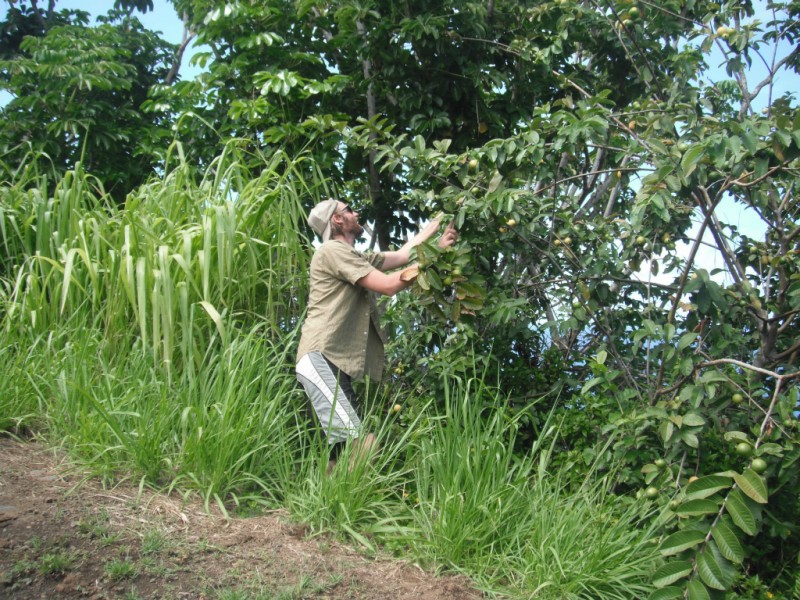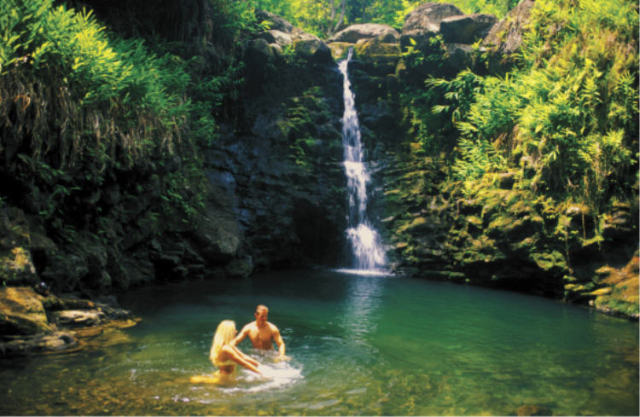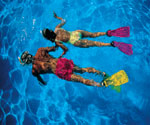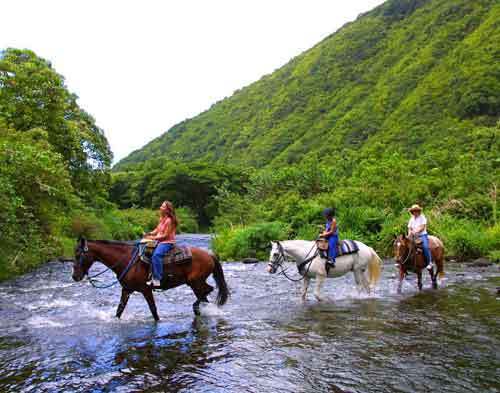
The Big Island is rife with opportunity and attractions peering around every corner. So much so that it is easy to miss a lot of the excitement that stares you in the face on your entire visit. Though foraging is more practical the whole world round than most think, it is extremely popular in Hawaii. Many people that wish to live off the land choose Big Island for their lifestyle. However, you don’t need to go throwing out your cell phone, and returning to life in a hut to appreciate the bounties of foraging a surprisingly complete diet on the Big Island of Hawaii.
The first, most obvious option for a free snack on the island is the unbelievable bounty of fruit to be found on the roadsides. The basic guideline here is that if it’s hanging over into the roadway, actually over the pavement, then it is fair game to pick and eat. Note that an extreme degree of respect is of utmost importance when foraging on the side of the road. Obviously, it’s much better to score a handful of guava from an empty stretch of highway than from a tree that’s barely stretching out of a locals yard while they are standing in the driveway. Just remember you are a guest on their island home, and Aloha is not to be taken advantage of.
The beautiful part of foraging is that even though you can embark on an adventure to find a certain fruit, you certainly don’t have to. If you already have plans to snorkel by the Captain Cook Monument, which you definitely should, keep an eye out for breadfruit along Napoopoo
Road. A man who lived off the land in Puna for five years describes a very earthy and traditional method for preparing breadfruit. It starts with a small camp fire by the beach. Then, you chop off the top of the breadfruit, and put it upside down in the fire for about five minutes. A dipping sauce is made from simply a little coconut milk, sea water, and lime juice. The finished combination broke da mouf, as the locals say. It is absolutely delicious.
Speaking of citrus, Hawaii is home to some of largest lemons and limes I’ve ever seen. I was bartending at a bowling alley in Kona once when a friend of the establishment brought in some fruit for the bar that had grown wildly on some land she owned. I kid you not, one of the limes was six inches long and a good three or four inches in diameter. The enormous grapefruit weighing the trees to the ground in local yards will blow your mind. Actually, almost all the citrus I have seen around the island is growing in someone’s front yard, so I recommend checking out a farmer’s market or fruit stand if you want to try it.
If you happen to fly in to the Keahole Airport in Kona, you just might think you’ve landed on the moon because the airport is surrounded by lava desert. It doesn’t look like you could find much of anything growing there, much less anything edible. This is pretty deceptive because just up mauka (a common Hawaiian expression meaning up the mountain), grows a bounty of delicious fruits. The slopes of Hualalai Mountain stretching above Kailua-Kona are covered with lilikoi (passion fruit), mangos, papayas, and avocados. Keep an eye out for places where fruit has been run over in the road to tell what is in season and where, especially on the drive up to the art and coffee village of Holualoa. Though the lilikoi are my favorite wild fruit on the West side of the island, it has an incomparable relative to the north in Kohala.
This fruit is the prize of embarking on a bit of an adventure, and is probably only worth it if you’re in decent shape and really like new things. The Pololu Valley lookout just outside of Hawi is in itself somewhat of an off-the-beaten-path adventure. Nonetheless, a hike into the valley, across its lovely beach, and up the next ridge offer a beautiful view and just deserts. Look for a small path through low brush heading up Pololu’s far ridge. Just past a metal gate up top you’ll find waxy, orange fruits attached to vines growing in the trees on either side of the trail. I usually have better luck on the right side. Continue up the trail, and eventually you’ll come to a bench with an absolutely breathtaking view of the scarcely touched wilderness in Honokane Nui Valley.
On the other end of the Kohala Forest Reserve lies the gorgeous Waipi’o Valley. Most of the fifty-or-so people that live in the valley grow Taro for a living. Though many other things also grow abundantly in Waipi’o, it is a very sacred place on the island. I suggest just enjoying the peace and beauty of this spot. Having a sacred valley washed out by a tsunami, and then turned into a tourist hot spot is plenty without having the tourists take the produce too.
Just down the road towards Hilo, there’s another less populated park on the coast called Laupahoehoe Point Beach Park. It’s a pleasant park that allows pre-reserved camping, but better yet there’s a treat on the road down to to the park. Keep an eye to the makai side (sea
side) of the road for yellow, circular fruits in the trees. These are guava, and when they’re ripe, there are usually a ton of them. They are traditionally used to make jellies, jams, and juices. I think they’re just as great raw, sliced in half, and eaten with a spoon.
Further south, on the other side of Hilo, is the quirky district of Puna. Puna is an odd mixture of hippies, bikers, and recluses that jumble amazingly together in the town of Pahoa. Puna is absolutely littered with edibles. Don’t forget to be especially respectful of the locals, their land, and their space in Puna. Just trust me on that. If time permits, a lazy drive down Highway 137 (between 132 and 130) is enchanting and well worth it. There’s a great little local style restaurant at the end of 137 called Kalapana Village Cafe in case you need something with a little more substance and less sugar after all this foraging.
The beaches have their fair share of nutrition as well. A good way to round out a living-off-the-land diet is with the meat of a coconut. The trouble of the coconut is that they are dangling way up in the tree tops. I strongly recommend just accepting this, and going to the farmer’s market for a coconut. They’ll chop the top off the coconut, and give it to you with a straw in it. The first time I snagged a couple coconuts out of necessity, I skinned the arches of both of my feet in the process. It’s really not worth the try unless you know what you’re doing. There’s plenty to be had in the sea as well. Limu, Hawaiian for seaweed, is often edible. This site is a great guide for what is edible. Also, Opihi are small black shellfish clinging to rocks and sea walls that you can eat ri ght out of the ocean.
The Big Island of Hawaii has a ton to offer its visitors. From rich culture and relaxing beaches to breathtaking views and an active volcano, it’s easy to be overwhelmed on a short trip. Being overwhelmed is the opposite of what Hawaii is all about. Remember on your trips from A to B around the island to stop and appreciate the little things like free fruit along the way.




 Hike
with an expert guide in Hawai'i Volcanoes National Park, in the rain
forests, deep in remote valleys, and explore hidden waterfalls
Hike
with an expert guide in Hawai'i Volcanoes National Park, in the rain
forests, deep in remote valleys, and explore hidden waterfalls
 Enjoy
a picturesque Hawaiian horseback ride through the Valley of the
Kings, a lush tropical paradise of jungle trails, waterfalls, and spiritual sites.
Enjoy
a picturesque Hawaiian horseback ride through the Valley of the
Kings, a lush tropical paradise of jungle trails, waterfalls, and spiritual sites.
